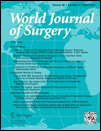Augmented Reality-Based Visual Cue for Guiding Central Catheter Insertion in Pediatric Oncologic Patients
Joong Kee Youn and Dongheon Lee contributed equally to this work as first authors.
Hyoun-Joong Kong and Hyun-Young Kim contributed equally to this work as corresponding authors.
Abstract
Background
Pediatric hemato-oncologic patients require central catheters for chemotherapy, and the junction of the superior vena cava and right atrium is considered the ideal location for catheter tips. Skin landmarks or fluoroscopic supports have been applied to identify the cavoatrial junction; however, none has been recognized as the gold standard. Therefore, we aim to develop a safe and accurate technique using augmented reality technology for the location of the cavoatrial junction in pediatric hemato-oncologic patients.
Methods
Fifteen oncology patients who underwent chest computed tomography were enrolled for Hickman catheter or chemoport insertion. With the aid of augmented reality technology, three-dimensional models of the internal jugular veins, external jugular veins, subclavian veins, superior vena cava, and right atrium were constructed. On inserting the central vein catheters, the cavoatrial junction identified using the three-dimensional models were marked on the body surface, the tip was positioned at the corresponding location, and the actual insertion location was confirmed using a portable x-ray machine. The proposed method was evaluated by comparing the distance from the cavoatrial junction to the augmented reality location with that to the conventional location on x-ray.
Results
The mean distance between the cavoatrial junction and augmented reality location on x-ray was 1.2 cm, which was significantly shorter than that between the cavoatrial junction and conventional location (1.9 cm; P = 0.027).
Conclusions
Central catheter insertion using augmented reality technology is more safe and accurate than that using conventional methods and can be performed at no additional cost in oncology patients.




